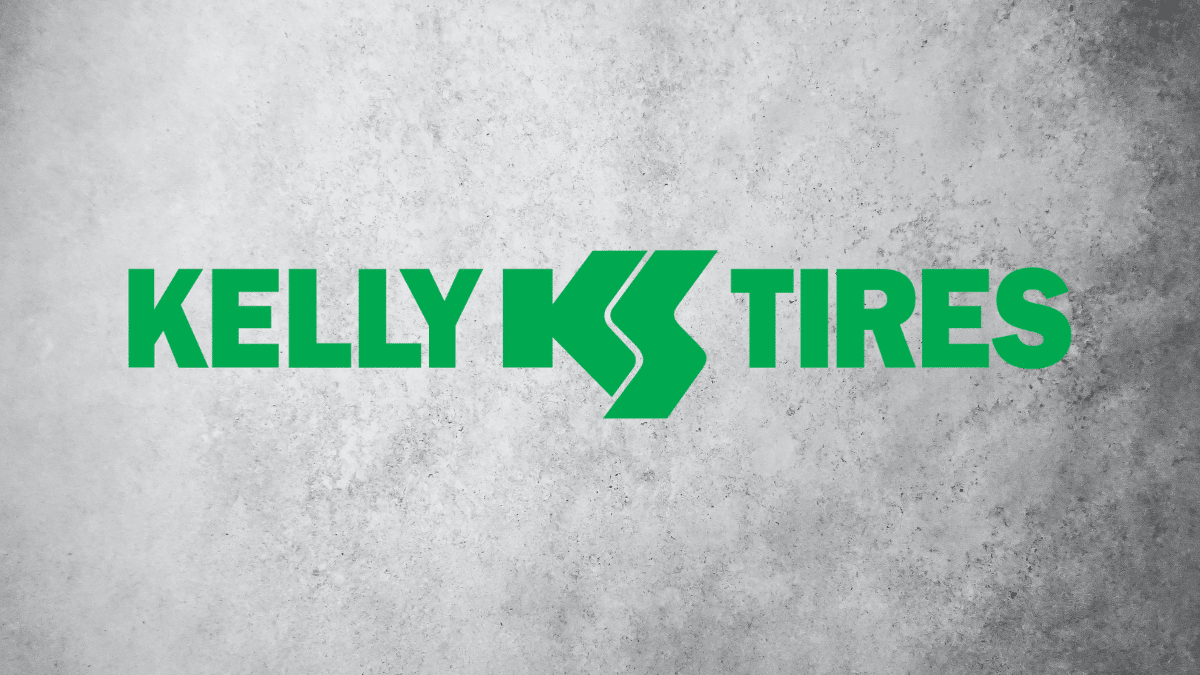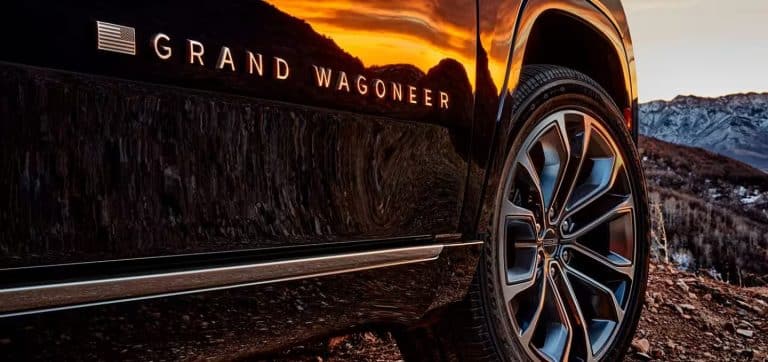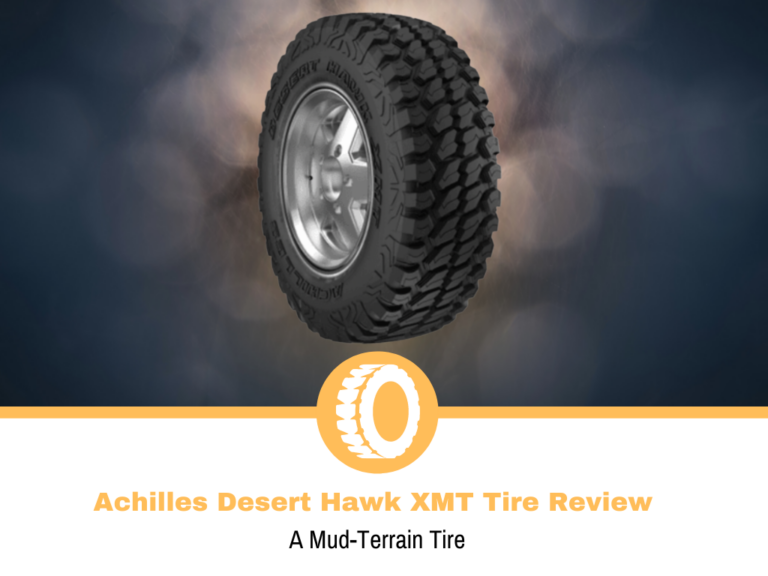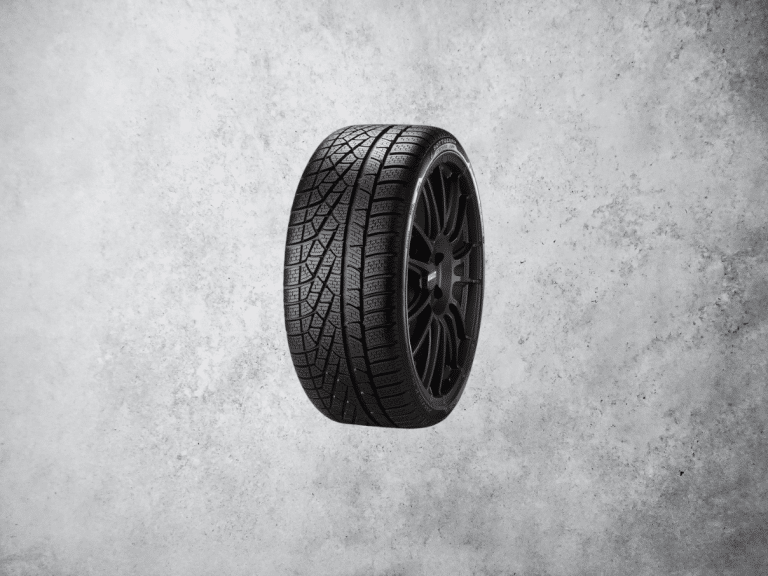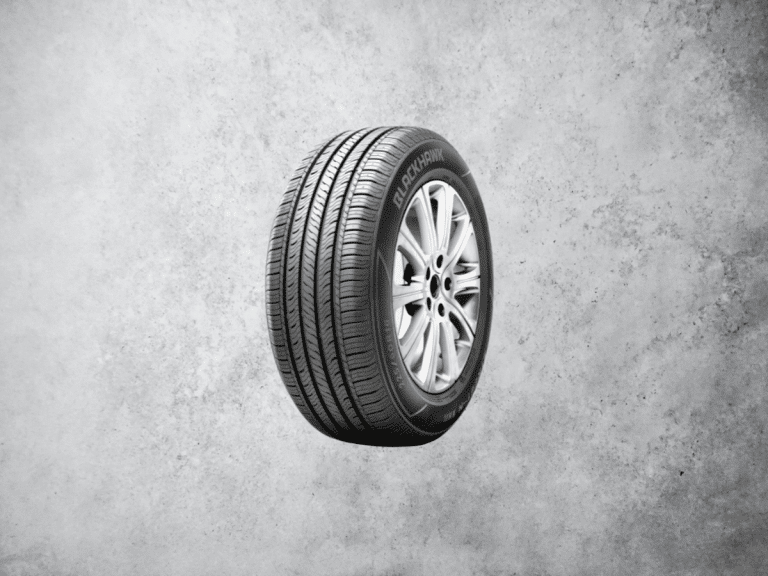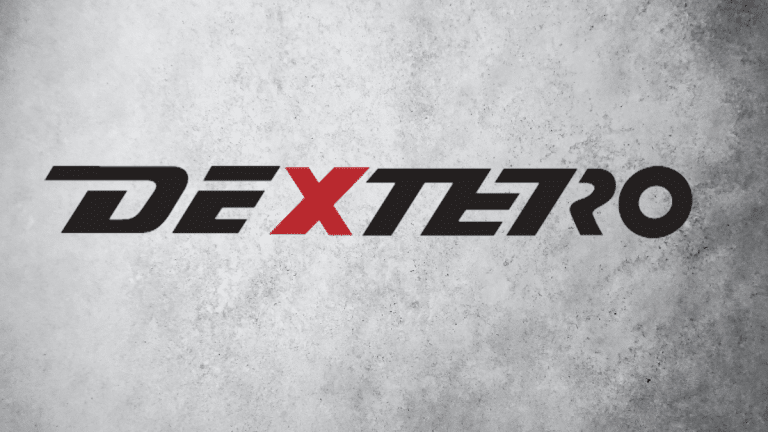Kelly Tires Review: Decent Performance for the Price
The tire industry has a handful of names that we all know and love. Michelin, Goodyear, Continental, and a few others are the tires we usually praise as the best mainly because they are some of the oldest manufacturers.
Interestingly enough, some lesser-known brands come from the same era. Let’s look at Kelly. The company was founded in 1894 in Springfield, Ohio, making it among the oldest US-based manufacturers. Throughout the decades the company get the popularity of the other brands, but continued growing and expanding its business.
In 1935, Goodyear purchased Kelly, but the company remained as an independent subsidiary. That changed in 1990 when Goodyear absorbed Kelly and today things work differently.
Despite the different brand name, Kelly is part of Goodyear as a sub-category of tires. You can consider them as an affordable option when compared with its premium company. I often categorize them as a mid-range option offering a good price-to-performance ratio.
All of this sounds good on paper, but how do the Kelly tires perform in the real world?
Before I begin, there’s a minor caveat. Kelly announced the Edge Sport and the Edge Touring A/S a few days ago, so you won’t see them in today’s list. This is because we haven’t had a chance to test them, so we’ll update this review once any of us gets our hands on them.
Kelly Tires Review
Here are the best Kelly tires currently on the market:
#1. Edge A/S
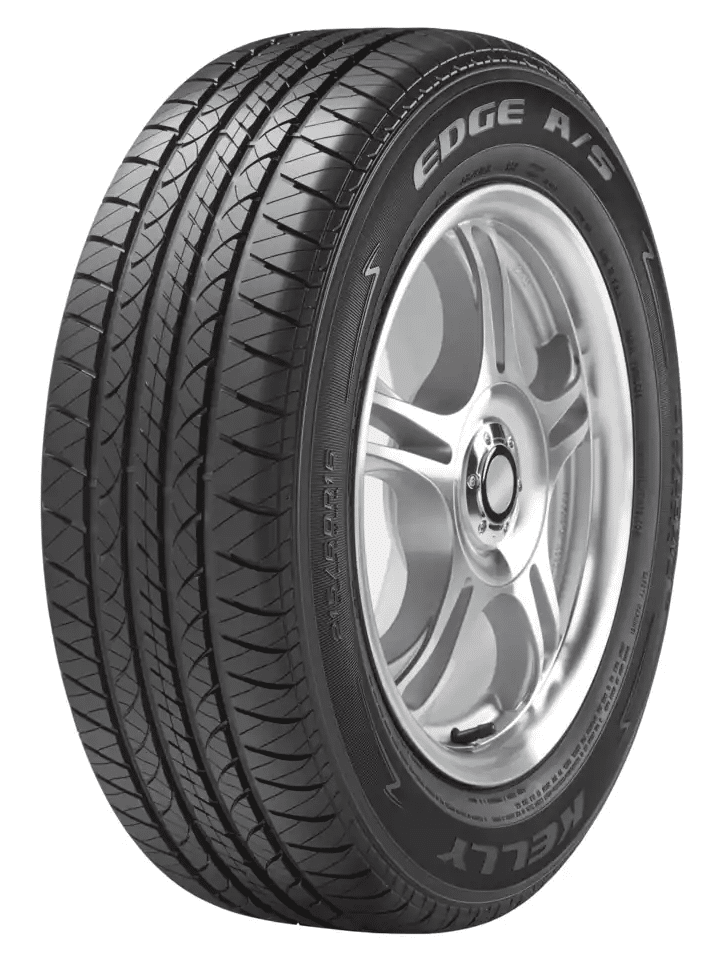
Don't know the correct size tire to purchase? Start here!
The most common tire of the bunch is the Edge A/S. It’s an all-season touring model, designed for decent comfort and longevity that comes in a wide range of sizes.
Looking at the features, you won’t see anything groundbreaking. The Edge A/S features an all-season rubber compound that should enable you to have usable performance throughout the year. There are also key features in the tread pattern. The circumferential and lateral grooves are designed to evacuate water. As for the sipes, they should help the tire with traction on damp and snow-covered roads.
On the road, the Edge A/S offers decent performance on dry roads, which is what you should expect. It’s not a tire that you should push, so it should be fine for most average drivers with lesser powerful cars. In wet conditions, the tire doesn’t feel as good. It struggles for traction a bit more than I’d want to and you won’t get the shortest braking distances in its class. Winter performance is good enough if you consider we’re talking about an all-season tire. It’s usable in lighter conditions as long as you’re careful with your speed and inputs.
The refinement is a mixed bag. On the noise side of things, the Edge A/S is a solid option, as it doesn’t get too loud even at higher speeds. With that said, the comfort levels are a bit disappointing because the tire has a harsh nature, something we see with performance tires.
As a touring tire, the handling is solidly responsive, if you can get used to the fact that you won’t get a lot of feedback through the steering wheel. Considering the price, the 55,000-mile treadwear warranty puts it near the premium tires in this category.
Pros
- Decent performance in dry conditions
- Responsive
- Noise levels are solidly low
Cons
- It will struggle for traction on wet
- The comfort levels aren’t the best
#2. Edge HP
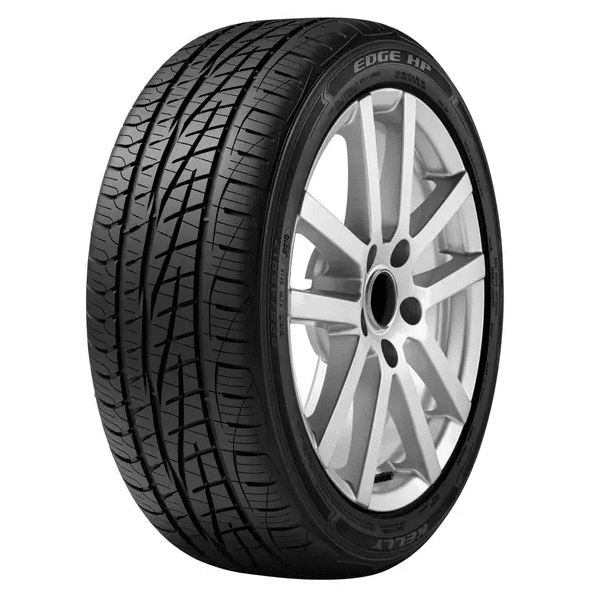
Don't know the correct size tire to purchase? Start here!
If you’re after a bit more performance you should look at the Edge HP. With this model, you should be looking at a more sporty feeling without a massive compromise in terms of refinement.
The asymmetric tread pattern is molded from an all-season compound aiming to bring excellent performance in multiple weather conditions. There’s a wide central rib designed to improve stability and handling. Another aspect of the tire that should help with handling is the shoulder blocks. They are stiffer, so we should have a dynamically inclined tire.
In terms of performance, the Edge HP delivers some of it. The grip and traction levels on dry roads are pretty good and you can push it a bit. I wouldn’t compare it with the premium options, but it should be enough for an enthusiast on a budget. Unlike the previous model, the wet performance is better and is closer to the rest of the mid-range tires. It won’t struggle too much with traction and the aquaplaning resistance will keep it stable on the highway. The performance on snow is as good as you can expect. You can use it in lighter conditions, and it will be fine, especially on unpacked snow.
Surprisingly, the refinement seems to be a bit better. The Edge HP is a stiff tire but seems to do a bit better over bumps when compared to its touring cousin. It’s far from the most comfortable tire, but it’s fine for daily situations. The noise levels are decent and even though the tire is audible, it’s not obnoxiously loud.
The handling characteristics are decently dynamic. With the Edge HP, you’ll get a bit more feedback from the road and the responsiveness will be solid. The package comes with a 45,000-mile treadwear warranty, which is decent in this category.
Pros
- Solid performance on dry and wet roads
- Usable on unpacked snow
- Decent treadwear warranty
Cons
- The tire will struggle a bit on packed snow
- Lacks just a bit more feedback
#3. Edge HT
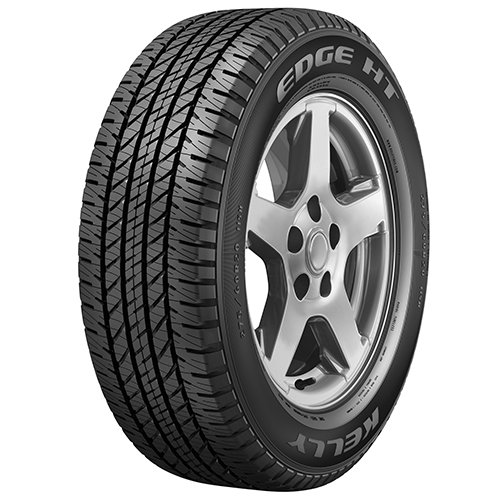
Don't know the correct size tire to purchase? Start here!
With the passenger tires out of the way, let’s look at a few options for larger vehicles. The Edge HT is a highway tire made primarily for SUVs, offering all-season performance in a touring package.
Like any all-season tire, the Edge HT is made from an all-season rubber compound that should provide decent performance in multiple conditions. The tread pattern featuring grooves and sipes is designed to help with traction on damp and snowy roads, as well as improve aquaplaning resistance. For stability, the tire has a reinforced central rib, that should help improve handling and stability.
The performance of the Edge HT on dry roads is pretty good. It will offer the necessary grip and traction levels to keep you safe which is backed by the decently short braking distances. On damp roads, the tire will struggle a bit with traction but still remains acceptably good. The aquaplaning resistance on the other hand is excellent and the stability isn’t compromised. In winter, the tire’s ability to bite into snow is good. It won’t struggle with unpacked snow or slush, but you will notice a bit of slip over packed one, which is to be expected.
As a highway tire, the refinement levels of the Edge HT are good. The tire does well with smaller road imperfections and will soften the larger ones. It does this while aborting a good amount of vibrations and preventing them from entering the cabin. The noise levels are excellent, as you’d expect. You won’t get a lot of roar even at highway speeds and the most you’ll hear is over a rough surface.
The handling isn’t the most dynamic, which isn’t a surprise. There is a decent enough responsiveness from the Edge HT, but don’t expect a lot of feedback. With a 60,000-mile treadwear pattern, this is a tire that offers more than some of its premium rivals.
I’m adding a section here because there is some confusion. As part of the Edge HT lineup, some models are designed for light trucks. In general, the performance is similar between both, and the main difference is the internal construction. The light truck models will handle higher loads, so they are technically a different model.
Pros
- 60,000-mile treadwear warranty
- Very good performance on dry roads
- Decent on unpacked snow and slush
Cons
- Performance on packed snow is a bit behind its rivals
- It may struggle for grip and traction on damp roads
#4. Edge A/T
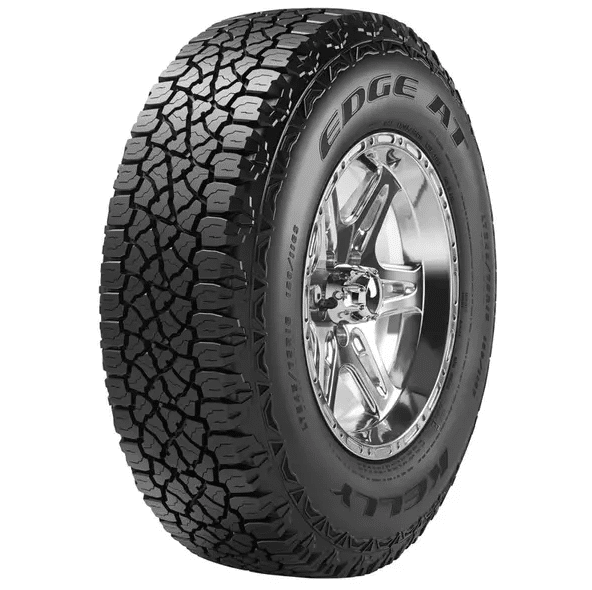
Don't know the correct size tire to purchase? Start here!
SUV or light truck owners that want some off-road performance have the Edge A/T. This is an all-season all-terrain model, which is designed to offer a blend of on and off-road performance.
Considering that it’s an all-terrain tire, the Edge A/T has features that should help it from both sides. On the road, the rubber compound and the tread pattern are designed for high grip and traction in multiple weather conditions throughout the year. The pattern is also responsible for the off-road performance. It’s more aggressive when compared with road-going tires, so we should see some decent performance in lighter off-road situations.
On the road, the performance you’ll get from the Edge A/T is decent. In dry conditions, the grip and traction levels will be fine for most people. The most important thing here is that it’s not a tire that you should push hard. Damp roads are the weakest point of this tire. It’s not unsafe, but even a bit of aggressiveness and you’ll notice it slipping and struggling for traction. A glimpse of hope is the aquaplaning resistance which is pretty good. In snowy conditions, the tire does a solid job on unpacked snow or slush. With that said, packed snow is problematic, and the tire doesn’t grip as well as some of its rivals.
In off-roading scenarios, you will find usable performance in certain situations. The Edge A/T offers solid traction on dirt roads, even in cases where you push it a bit. In lighter mud conditions, the tire’s performance is solid enough, but not for long. It seems that either there isn’t a self-cleaning pattern, or it doesn’t do its job, so the mud can get stuck in the tread. Considering that it’s an all-terrain model, don’t expect some serious off-roading performance like rock-crawling.
Looking at the refinement, the Edge A/T doesn’t differ too much from the rest of its rivals. The noise levels are acceptably low and despite the slightly aggressive pattern, it’s not the loudest tire in the bunch. As for comfort, I wouldn’t say it’s excellent, but it’s not overly stiff. It will absorb some of the bumps and will eliminate the vibrations partially, but it won’t replace a touring tire.
As a tire capable of off-roading, the Edge A/T isn’t the worst choice you can find on the market. Its responsiveness is acceptable to a point where it won’t feel sloppy, but the feedback is as muted as most of the tires on this list. With a 50,000-mile treadwear warranty, this tire is on the same level as some of the premium options.
Pros
- Solid off-road performance
- Grip and traction levels in dry conditions are good
- Decent snow performance
Cons
- Traction on damp roads is a bit behind its rivals
- The tire will struggle a bit on packed snow
#5. Safari TSR
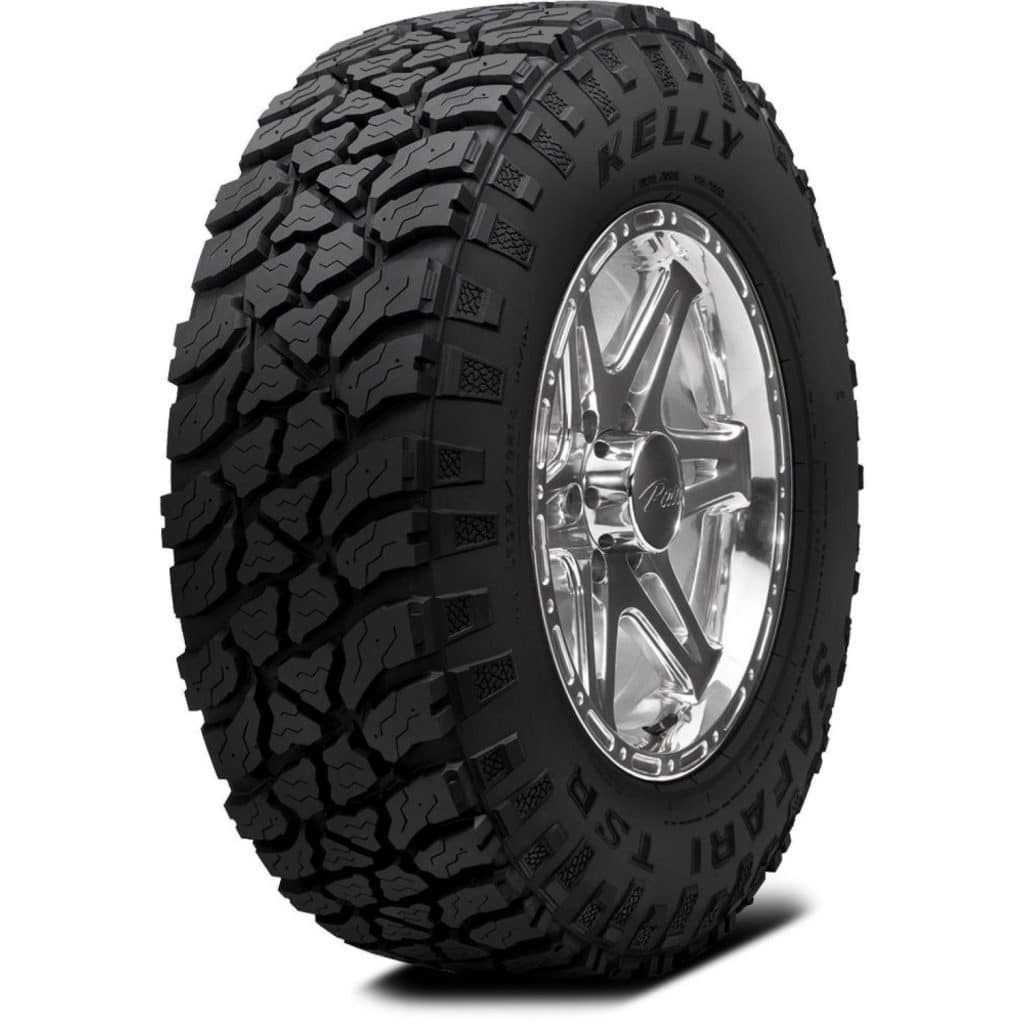
Don't know the correct size tire to purchase? Start here!
The second all-terrain model you’ll find under the Kelly brand is the Safari TSR. To be honest, I have no idea what TSR stands for, but I know what Safari is, and based on the pattern, we’re looking at a more aggressive all-terrain tire when compared with the previous one.
With a non-symmetric pattern molded from an all-season rubber compound, the Safari TSR aims to bring decent road performance in multiple conditions. For road use, the tread pattern is designed to help with traction in snowy conditions and to improve aquaplaning resistance. In off-road conditions, the self-cleaning design will keep the tread clean ensuring consistent performance. The staggered shoulder blocks should help with traction in these conditions, especially in mud.
Driving on paved surfaces with the Safari TSR isn’t a bad experience. The tire’s grip and traction levels on a dry road are pretty good and that will be fine for most people. It’s stable enough on the highway and offers decent braking distances. The traction on damp roads could use a bit of work, but it’s not terrible. In harsh rain conditions, the pattern does a very good job of channeling water, so the aquaplaning resistance is pretty good. Winter performance is a surprise. In lighter conditions, the tire does a decent job like most all-terrain tires do. With that said, considering that it’s a studdable tire, once you fit the studs, you can improve that, especially over ice.
The performance in off-road situations is better than the previous model. With the Safari TSR, you’re looking at slightly better traction on dirt roads. The biggest improvement is in muddy situations. Thanks to the self-cleaning pattern, the tire will almost always have clean grooves, so the performance will be a bit more consistent. In addition to that, the tire will do a bit better in deeper mud. For rock-crawling, it wouldn’t be my first choice, but I can’t say that it’s the worst. It can do an acceptably solid job over smaller rocks.
As an all-terrain tire, the refinement levels are pretty decent. The Safari TSR delivers decent comfort levels and can absorb even larger bumps without transferring too many vibrations into the cabin. In terms of noise, there is a growl, which is to be expected. With that said, it isn’t as pronounced as I thought, and the tire remains acceptably quiet even at highway speeds.
Handling isn’t something I’d call excellent, but it’s not terrible. The Safari TSR offers acceptable responsiveness which combined with the lack of feedback is what you’d get with most all-terrain tires. Unfortunately, this model doesn’t come with a treadwear warranty.
Pros
- The self-cleaning pattern keeps the performance consistent in off-road conditions
- On the road, the performance is enough for most people
- Decent comfort and noise levels
Cons
- Wet traction is a bit behind its rivals
- Snow traction isn’t the best without the studs
#6. Edge MT
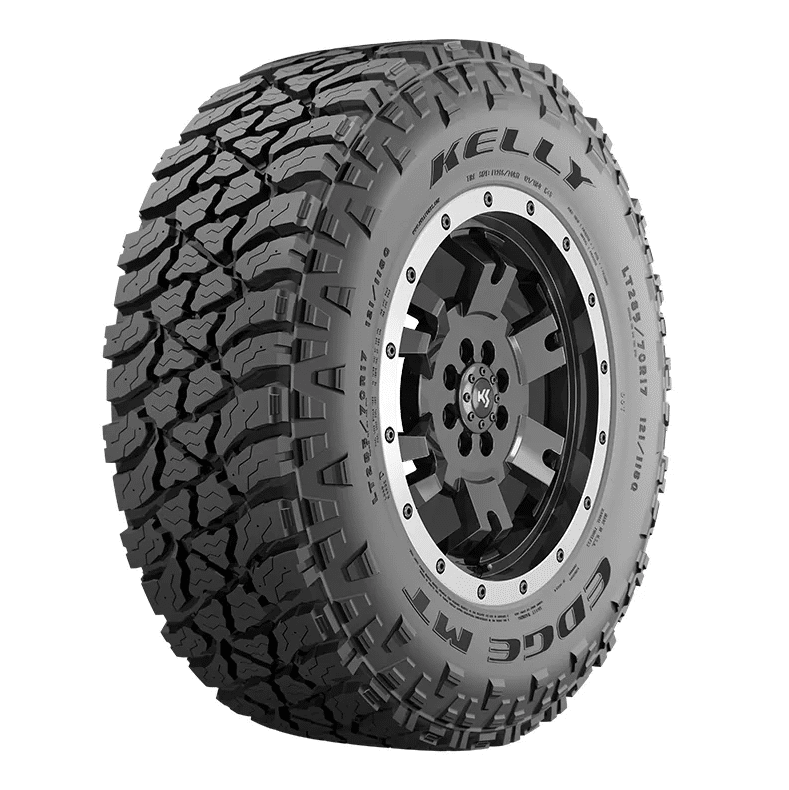
Don't know the correct size tire to purchase? Start here!
The last entry on this list is a mud-terrain tire. Kelly has the Edge MT, a model designed for the most aggressive off-road scenarios with acceptable road performance.
A rare sight in the mud-terrain segment are studs and the Edge MT offers that, as an option to improve traction on packed snow and ice. The aggressive tread pattern with open grooves is designed to help with off-roading, especially on mud. Kelly designed it to be self-cleaning, so we should see some consistency in the performance. The multi-directional sipes are there to help traction on damp roads.
Considering that it’s a mud-terrain tire, the road performance of the Edge MT is decent. The tire does a solid job of delivering the necessary grip and traction on dry pavement to keep things safe. Combined with solid highway stability, it will be fine. Despite the sipes, the damp performance is just a bit behind its rivals, along with the braking distances. They are still within the safe limits, but I would have liked to see some better results. On snow without the studs, the tire will offer solid performance. It will struggle on packed snow and will be useless over ice, which is where the studs come into play.
In off-road conditions, the Edge MT is a solid performer for the price. It won’t struggle for traction on hard-packed surfaces, and you’ll get solid braking distances. The tread pattern does an excellent job in mud and the tire will find traction even in deeper situations. To be fair, it’s not the most aggressive tire on the market, so some of its rivals will do a better job. It’s a similar story if you’re driving on sand – it’s good enough, but still behind the premium models. In rock-crawling scenarios, the tire will handle lower pressure to increase the contact patch. With that said, with no information about the internal construction I cannot say how long it will survive in those conditions.
The refinement isn’t the best, but that’s not what a mud-terrain tire is designed for. Comfort levels are barely acceptable as the tire feels firm. There is some faint bounciness which doesn’t get any better or worse when you tweak the pressure. The noise levels are admirable and considering the aggressive pattern, the Edge MT isn’t the most vocal tire in this category.
Mud-terrain tires aren’t designed for precision driving, so the handling isn’t the best. The Edge MT isn’t the quietest tire to respond, and you won’t have a lot of feedback to rely on. Like most tires in this category, you won’t get a treadwear warranty.
Pros
- Studdable
- Solid off-road performance
- Stable and planted in dry conditions
Cons
- Wet performance is a bit behind its rivals
- The ride quality is a bit firm
Kelly Tires Buying Guide
What is there to like about Kelly tires? What is it that distinguishes these tires from the chasing pack? Are there areas where Kelly tires could or should have done better? Any shortcomings that could potentially be deal-breakers? This section has all the answers.
Why Should You Buy Kelly Tires?
Here’s why Kelly tires should be on your short list of tire brands to buy next:
1. Affordable
Despite being a sub-brand of Goodyear, Kelly tires are sold as a budget-friendly option. Like most non-premium models you are giving up a bit on performance, but still remain safe. This is why I categorized these are models with a very good price-per-performance ratio.
2. Solid performance
I won’t categorize Kelly tires as the absolute best, but I won’t say that they are poor. In essence, you’re getting what you pay for, so you need to have realistic expectations. As a package, the tires offer decent performance that will be enough for some people.
Considering that these aren’t tires I would consider for a powerful car. Sure, you can use them, but you’ll notice them struggling a bit more when compared to their premium rivals.
3. Wider range of options and sizes
To be fair, Kelly doesn’t have millions of models, so this may seem misleading. With that said, all of the models cover a wide range of applications, and combined with the size options, there aren’t too many vehicles where you won’t be able to fit them.
Why Should You NOT Buy Kelly Tires?
Here’s why Kelly tires may not be a good choice for you:
1. Wet performance
I mentioned that as a package, Kelly tires are solid, but there are some drawbacks. In almost all cases, the biggest weakness of these tires is the traction on damp surfaces. It seems that the sipes and rubber compound aren’t giving their best in these conditions. Don’t get me wrong, the tires are far from unsafe and terrible but fall a bit behind some of the mid-range rivals.
2. No dedicated options
Even though Kelly tires cover a wide range of vehicles and applications, there are no dedicated winter options. When I say dedicated, I mean summer or winter tires. All models here are all-season, meaning that you won’t be able to get a tire designed for a specific season. It’s not a massive problem with summer applications, but without a dedicated winter tire, you won’t have an option with excellent snow performance.
3. Refinement
The tires we have from Kelly aren’t the worst, but considering that they aren’t premium models, this is one of the tradeoffs. Yes, the refinement levels are acceptable, but I wouldn’t exactly say that they are exceptional. For example, the Edge A/S was a bit too firm for my liking, which is something you shouldn’t say about a touring tire.
Frequently Asked Questions
Here are some of the common queries people have about Kelly tires:
Who makes Kelly tires?
At a certain point in history, Kelly had its own manufacturing plant. That changed in 1990 when Goodyear completely transferred the company to its headquarters. As a result, technically, Goodyear makes Kelly tires.
Where are Kelly tires made?
For the most part, Kelly tires are made in the USA. There are some plants in Europe, but that doesn’t mean that the tires over there are of lesser quality than the domestic ones.
How long do Kelly tires last?
No one would be able to answer how long a tire will last. There are tons of situations where a tire may last long or won’t, which is why we look at the treadwear warranty as a theoretical indicator. With Kelly tires, the warranty is solid and in some cases as good as some of the premium models. This means that technically these tires should last long.
Is Kelly a good brand?
It depends on how you look at things. Goodyear is a good brand and with that in mind, Kelly isn’t so much. When compared with other brands from the same class, Kelly is a good enough brand. It makes decent-performing tires at a price that would fit most people’s budgets.
Are Kelly tires noisy?
I mentioned the refinement as a drawback, but that was more toward the comfort levels. In terms of noise, Kelly tires are decent. I wouldn’t say that they are as quiet as the Turanza QuietTrack, but I will say that they are far from the loudest options. Even the mud-terrain model is surprisingly quiet for the category.
Are Kelly tires good for snow?
Kelly tires aren’t good in the snow, they are acceptable and there’s a huge difference. As all-season models, we shouldn’t expect miracles in the snow, and in this regard, Kelly tires are acceptable enough. The biggest problem here is that there isn’t a dedicated winter tire that will deliver good snow performance even in harsher conditions.
With that said, there is a positive side to Kelly. Some of the off-road capable options can be fitted with studs that will help improve snow performance. They won’t be as good as dedicated winter tire, but will be better than the models without studs.
Conclusion
On paper, Kelly tires is a brand that seems to offer a lot for not a lot of money. Solid performance at an affordable price isn’t something you’ll find with all manufacturers.
In a real-world scenario, the performance you’d get from Kelly tires is decent and most people will be happy with it. They won’t wow anyone, but when you factor in the price, you start to understand that they are worth it. There are drawbacks and they won’t win any awards, so you’ll need to be mindful of the limitations.
I would recommend Kelly tires for people on a budget looking for a good bang for the buck. The decent performance combined with the affordable price is something that would be a good choice for non-aggressive drivers that have older and less powerful cars.
